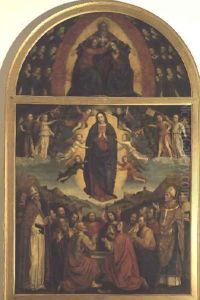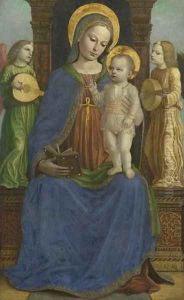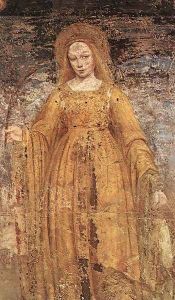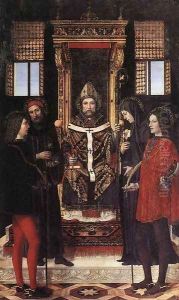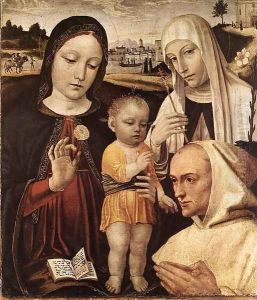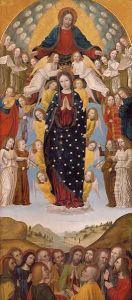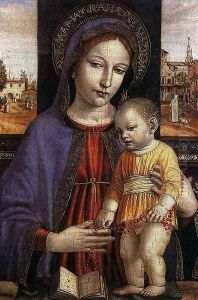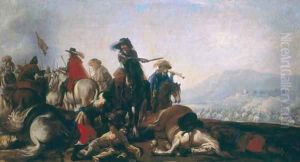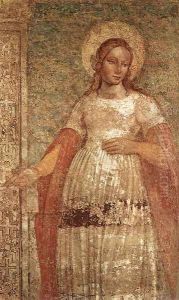Bernadino Bergognone Paintings
Bernardino Bergognone, also known as Bernardino Luini or Bernardino da Fossano, was an Italian Renaissance painter known for his devotional works and frescoes. He was born around 1453 in Fossano, Piedmont, in northwestern Italy, a region that at the time was under the influence of the Duchy of Milan. Not much is known about his early life or training, but it is presumed that he was influenced by Lombard painting traditions and possibly the work of Andrea Mantegna.
Bergognone's work is characterized by its serene piety, delicate coloring, and attention to detail, typical of the Lombard school. His paintings often depict religious subjects with a tender and devout sentiment, reflecting the spiritual atmosphere of his era. Although he was less innovative than some of his contemporaries, his art was well-respected for its clarity of composition and purity of form.
The artist worked primarily in Milan and its surrounding areas, and he was greatly influenced by the milieu of the Certosa di Pavia, a monastery complex that was a center for religious and artistic life. Among his most significant works are the frescoes and altarpieces he created for the Certosa, which showcase his skill in creating harmonious and meditative religious scenes.
Bergognone's altarpieces are particularly notable for their narrative clarity and the calm dignity he imparts to his figures. His frescoes are distinguished by their subtle coloration and the smooth transition of light and shade, creating a sense of volume and depth.
Throughout his career, Bergognone remained somewhat conservative, adhering to the traditions and styles of the late 15th century. Despite this, his work possesses a timeless quality that continues to be appreciated. He died in 1523, leaving behind a body of work that contributes to the rich tapestry of Renaissance art in Italy. His legacy is preserved in the many religious institutions that house his paintings and in the collections of museums around the world.
